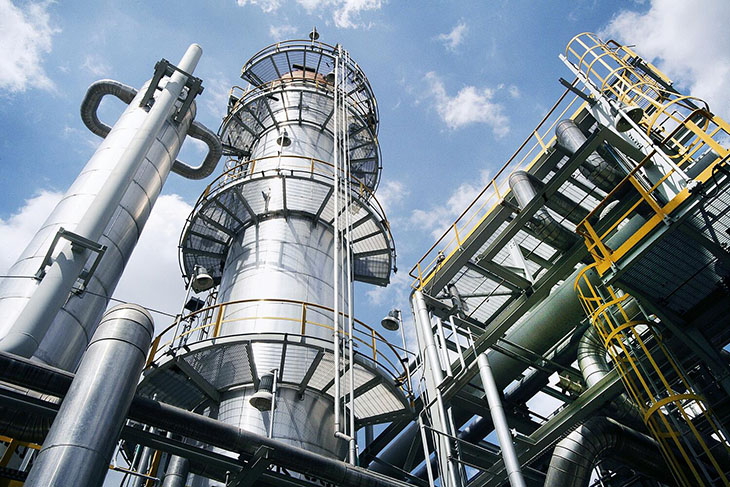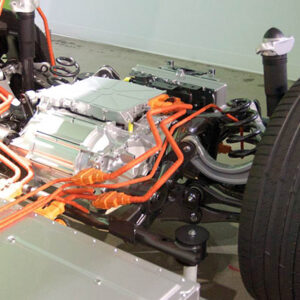
Harnessing energy isn’t always easy. This requires a lot of machinery, some time, and loads of money. Plus, the waste that comes out of the process destroys the environment. This has concerned a lot of scientists. They want to make life comfortable for the people, and the same time, make sure that the byproduct does more good than damage.
That’s why people are looking into clean energy. This makes use of Mother Nature’s elements. So far, this has worked, but most countries still go for the conventional forms of energy. Now, chemists may have also found another way to harness clean energy, and this time, from the most unlikely source that is oftentimes assumed to be dangerous.
The New Source
A research team that hails from the University of Wisconsin–Madison has discovered a new way to convert ammonia to nitrogen gas. This was made through a new process that could be the new future of energy. They found ammonia to replace carbon-based fuels that people may use.
This newest technique makes use of a metal catalyst and releases energy. This method received a provisional patent from the Wisconsin Alumni Research Foundation. “The world currently runs on a carbon fuel economy,” said Christian Wallen. He is an author of the paper and a former postdoctoral researcher in the lab of UW–Madison chemist John Berry. He added, “It’s not a great economy because we burn hydrocarbons, which release carbon dioxide into the atmosphere. We don’t have a way to close the loop for a true carbon cycle, where we could transform carbon dioxide back into a useful fuel.”
The team’s goal is to push the United Nations’ goal for the entire planet to become carbon-neutral by the year 2050. Scientists have been scrambling to find environmentally responsible ways to create energy from other elements aside from carbon. Because of this, the UW–Madison team has made a proposal that promotes a nitrogen energy economy. This idea is based on the interconversions of nitrogen and ammonia.
The scientists worked hard and they were more than happen to come upon the idea that the addition of ammonia to a metal catalyst containing the platinum-like element ruthenium was able to spontaneously produce nitrogen. This meant that added energy was no longer needed. Rather, the new process can be harnessed to produce electricity, with byproducts such as protons and nitrogen gas. Even better is that the metal complex can be recycled by exposing it to oxygen and used over and over again. This makes energy creation a cleaner process as opposed to the use of carbon-based fuels.
“We figured out that, not only are we making nitrogen, we are making it under conditions that are completely unprecedented,” shared Berry, the Lester McNall Professor of Chemistry. He has been focusing his studies and all his efforts to transition metal chemistry. He said, “To be able to complete the ammonia-to-nitrogen reaction under ambient conditions — and get energy — is a pretty big deal.”
Ammonia has been burned as a fuel source even years ago. During World War II, it was actually used for cars and other forms of transportation. Now, the experts have considered ways to burn it in engines to replace the often-used gasoline. This comes especially important in the maritime industry. Sadly, burning ammonia then gave off toxic nitrogen oxide gases that they didn’t want.
As for the new reaction in the latest process, they are able to avoid the production of poisonous byproducts. If the reaction were housed in a fuel cell where ammonia and ruthenium react at an electrode surface, it would be able to produce electricity in a clean fashion and without the need for a catalytic converter.
“For a fuel cell, we want an electrical output, not input,” Wallen said. He also explained, “We discovered chemical compounds that catalyze the conversion of ammonia to nitrogen at room temperature, without any applied voltage or added chemicals. This is the first process, as far as we know, to do that.”
“We have an established infrastructure for distribution of ammonia, which is already mass produced from nitrogen and hydrogen in the Haber-Bosch process,” said Michael Trenerry. He is a graduate student and author on the paper that discussed the process. He said, “This technology could enable a carbon-free fuel economy, but it’s one half of the puzzle. One of the drawbacks of ammonia synthesis is that the hydrogen we use to make ammonia comes from natural gas and fossil fuels.”
This conventional method is fast changing. Ammonia producers now are attempting to produce “green” ammonia. The term “green” has been used because the hydrogen atoms are supplied by carbon-neutral water electrolysis rather than the energy-intensive Haber-Bosch process.
While there were challenges along the way, these were addressed. Berry believes that there will be many advantages when ammonia is used as a common energy source. First of all, like propane, it’s compressible. It’s also easy to transport and store. Ammonia fuel cells already exist. However, the ones they have now need added energy. For instance, they need to first split ammonia into nitrogen and hydrogen.
The group is working hard to complete the next steps. They’re now working on figuring out how to engineer a fuel cell that takes advantage of this new discovery. They’re also finding environmentally friendly methods to create the required starting materials.
“One of the next challenges I would like to think about is how to generate ammonia from water, instead of hydrogen gas,” Trenerry said. “The dream is to put in water, air and sunlight to create a fuel.”
What are your thoughts? Please comment below and share this news!
True Activist / Report a typo


